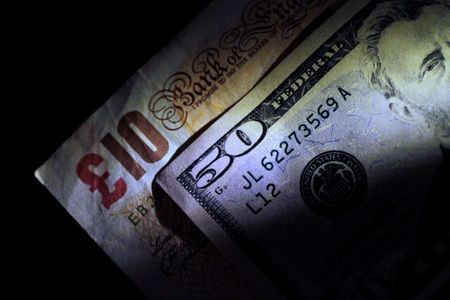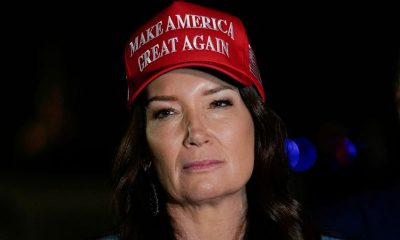Forex
Dollar slips ahead of payrolls; sterling gains post election

Investing.com – The U.S. dollar retreated in early European trade Friday ahead of the key monthly jobs report, while sterling edged higher after the result of the U.K general election.
At 03:55 ET (07:55 GMT), the Dollar Index, which tracks the greenback against a basket of six other currencies, traded 0.4% lower at 104.635, near its lowest point since mid-June.
Dollar slips ahead of payrolls
The dollar traded near two-week lows as traders returned from the U.S. Independence Day holiday ahead of the release of the widely-watched monthly official jobs report, looking for more cues on when the will start cutting interest rates.
Economic data this week have tended to show a cooling U.S. economy, and this has heightened expectations the Fed will cut rates sometime soon.
Traders are pricing in a 73% chance of a cut in September, according to the CME FedWatch tool.
Economists are expecting the U.S. economy to have added 189,000 in June after a larger than forecast gain of 272,000 the previous month.
“We think the risks are skewed to a softer reading today after the big drop in the employment component of the ISM services index,” said analysts at ING, in a note.
“To see a major repricing in Federal Reserve rate expectations to the dovish side however, we may need to see payrolls slow below 150k, considering the June Fed Dot Plot and rising perceived probability of a Trump win in November work as hawkish counterweights.”
Sterling gains on electoral certainty
rose 0.2% to 1.2780, just shy of the three-week high of 1.2777 seen earlier, after the opposition Labour Party won a massive majority in the U.K. general election, ending 14 years of power for the Conservative Party.
The pound is up 1% for the week, its best weekly performance since mid-May, with the expected change in government being seen as an opportunity for some certainty, despite a difficult fiscal situation, after years of market volatility under the Conservatives.
“We believe the new chancellor can avert spending cuts thanks to small edits of the fiscal rules and minor tax tweaks. However, it will be complicated to avert a rise in taxation further down the line,” said ING.
“What matters for sterling, however, is mostly the implications for Bank of England policy. And for the moment, there are none.”
rose 0.2% to 1.0827, gaining ahead of Sunday’s second round of parliamentary elections in France, with polls suggesting the far-right National Rally is likely to fall short of a majority.
The single currency, which has been under pressure since French elections were called in June, is up around 1% this week as worries that RN could gain a majority and introduce big spending increases have receded.
“We see some upside room for the pair on the back of U.S. payrolls disappointment potential,” said ING. “While EUR/USD may move to the upper half of the 1.08/1.09 range today, we think the lingering risk of a re-widening in French bond spreads after Sunday’s second round election mean the upside remains capped.”
Yen on intervention watch
In Asia, traded 0.3% lower to 160.84, with the strengthening of the yen sparking speculation over whether the Japanese government had intervened to support the currency.
Recent weakness in the yen was spurred by growing bets that the will have limited headroom to tighten policy further, amid persistent weakness in the Japanese economy.
traded marginally higher to 7.2674, with the yuan hovering around seven-month lows.
Sentiment towards China was further dented by reports that Beijing seized a Taiwanese fish trawler, and had also deployed aircraft around the Taiwan strait.
Any escalation in tensions with Taiwan could draw more scrutiny towards China, attracting more sanctions from the West.

 Forex3 years ago
Forex3 years agoForex Today: the dollar is gaining strength amid gloomy sentiment at the start of the Fed’s week

 Forex3 years ago
Forex3 years agoUnbiased review of Pocket Option broker

 Forex3 years ago
Forex3 years agoDollar to pound sterling exchange rate today: Pound plummeted to its lowest since 1985

 Forex3 years ago
Forex3 years agoHow is the Australian dollar doing today?

 Cryptocurrency3 years ago
Cryptocurrency3 years agoWhat happened in the crypto market – current events today

 World3 years ago
World3 years agoWhy are modern video games an art form?

 Commodities3 years ago
Commodities3 years agoCopper continues to fall in price on expectations of lower demand in China

 Economy3 years ago
Economy3 years agoCrude oil tankers double in price due to EU anti-Russian sanctions































